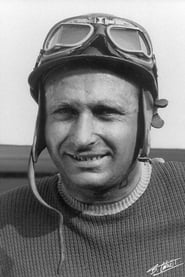Cast
View AllCrew
Director
- Ronald H. Riley
Writer
- Nevil Lloyd
Reviews
CinemaSerf
Born in the Argentine in 1911, this young man started work in a garage before driving for Ford then Maserati where he won his first F1 Grand Prix in San Remo. To Monaco in 1950 - and despite a nine-car pile up still he went on to win. In 1951, he secured his first world title and from here on his career, despite an injury in 1952, took off delivering consistency regardless of the car he was driving - Ferrari or Alfa Romeo. The Mille Miglia in 1953 then back to Maserati and a duel with Mike Hawthorn. 1954 sees the return of Mercedes with their almost space-age looking cars and his second world title. 1955 and Stirling Moss join Fangio at Mercedes and his third world title is earned. 1956 - Moss is now at Maserati, Hawthorn is at BRM and Fangio, at 45, is still winning the British GP. Even being kidnapped (in Cuba) couldn't stop his fourth title. In 1957 he concludes his full-time career at Maserati again, culminating in an astonishing victory at the Italian GP and a World Championship for the fifth time. He retired in 1958 and then returned to his homeland. Many of these races are covered with some remarkable camerawork that is edited together effectively giving us quite a thrilling sensation of his exhilaration as he drove a steadily improving series of motor cars that evolved aerodynamically and in terms of their ability to go faster. That, too is illustrated well with some on-board images that almost sucks you into the bends and the corners. The narration is a little adulatory, but it's also quite informative and if you're at all interested in the history of this man or of F1, then this is a must watch.
Feb 17, 2024
Thematic Analysis
A Tribute to Fangio represents a fascinating example of Documentary cinema, offering viewers a unique perspective on the human experience and societal structures. The film's approach to its themes demonstrates a creative vision that distinguishes it within its genre.
Director Ronald H. Riley brings their distinctive visual style to this film, continuing their exploration of themes seen in their previous works while adding new elements. Their approach to pacing and visual storytelling creates a viewing experience that rewards close attention.
Released in 1959, the film exists within a cultural context that now offers viewers historical perspective on the social issues of that era. Its reception demonstrates the diverse reactions to its artistic choices and its place in cinema history.
Did You Know?
- The production of A Tribute to Fangio took approximately 33 months from pre-production to final cut.
- The final cut of the film runs for 22 minutes, though the director's initial assembly was reportedly 50 minutes long.
- The film contains approximately 2034 individual shots.
- The screenplay went through 15 major revisions before the final shooting script was approved.
- Several scenes were filmed in multiple locations to capture the perfect setting.
Historical Context
- In 1959, when this film was released:
- The civil rights movement was gaining momentum in the United States.
- Television was becoming a dominant form of home entertainment.
- The film industry was dominated by major studios, with independent cinema still in its early development.
How This Film Stands Out
Details
- Release Date: January 1, 1959
- Runtime: 22m
